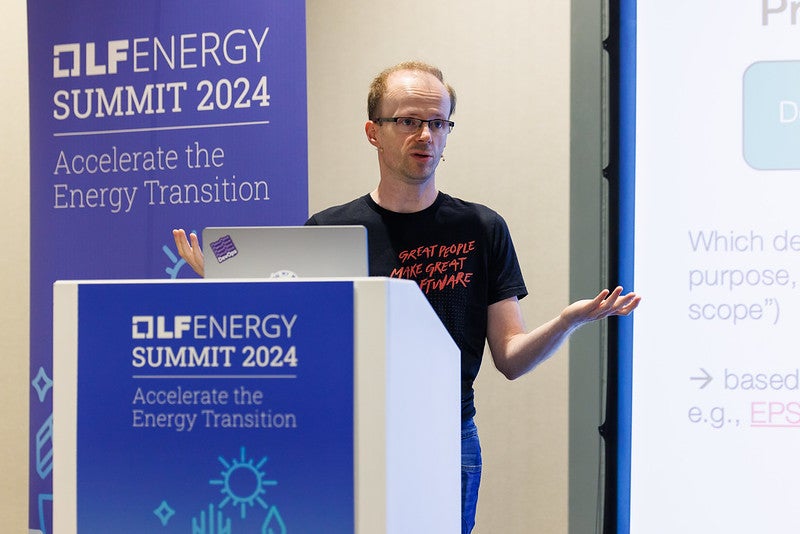LF Energy Summit Recap and Video: Strengthening Open Source Resilience: Managing Dependencies for Security
At the LF Energy Summit 2024 in Brussels, Dr. Marius Shekow and Florian Röder from SprintEins delivered a session titled “Strengthening Open Source Resilience: Managing Dependencies for Security.” With open source software driving innovation in industries such as energy, ensuring the security of dependencies is crucial. The session explored practical strategies and tools for managing software dependencies and addressing vulnerabilities, particularly in the context of enterprise-grade and critical infrastructure applications (full video follows at the end).
Why Security Matters in Open Source Dependencies
Dr. Shekow began by emphasizing the importance of security in open source projects. As software integrates numerous third-party dependencies, any vulnerabilities within these can expose entire systems to risks. The infamous Log4j vulnerability was cited as an example of how a single flaw in a widely used library can have global repercussions. For developers and organizations building critical infrastructure, such as in the energy sector, the stakes are even higher, making dependency management and security paramount.
Understanding Software Dependencies
Software dependencies are essential for accelerating development, as they allow developers to leverage existing functionality without reinventing the wheel. However, as Shekow pointed out, these dependencies often include indirect dependencies, leading to a “dependency blowup.” For example, including one library may automatically bring in several other packages, each of which could carry vulnerabilities.
Key challenge: Indirect dependencies increase complexity and make it difficult for developers to keep track of all the code their application relies on.
Addressing Vulnerabilities in Dependencies
Dr. Shekow outlined a clear framework for addressing vulnerabilities in software dependencies:
- Identify outdated and vulnerable dependencies: Tools like Dependabot and Renovate are instrumental in scanning for vulnerabilities and suggesting updates. However, simply identifying issues isn’t enough. Prioritization is key.
- Scope and prioritize: Not all dependencies need to be updated immediately. By analyzing the risk, organizations can categorize dependencies by their criticality and focus on updating those that pose the greatest threat.
- Automate updates where possible: Shekow highlighted the importance of automating dependency updates to avoid manual, error-prone processes. Tools such as Dependabot and Renovate automate the creation of pull requests when updates or vulnerability fixes are available.
Real-World Insights from LF Energy Projects
To provide practical insights, Shekow shared findings from an analysis of 32 LF Energy repositories. This revealed varying degrees of success in managing dependencies, with some projects exhibiting flat trends in their outdated dependencies and others showing growth. This analysis was facilitated by open source tools developed by SprintEins to track dependency health and automate updates across repositories.
Key takeaway: Automated dependency management improves project security and sustainability, reducing the likelihood of vulnerabilities lingering within critical codebases.
Tools and Best Practices for Dependency Management
Shekow introduced a set of open source tools that facilitate the entire process of managing dependencies:
- Dependabot & Renovate: Both tools were shown as examples for automating dependency checks and updates. The differences between them are minor, mainly revolving around support for different languages and package managers.
- GitHub Dependency Graph: This feature allows developers to view all dependencies within their project and receive alerts for any vulnerabilities.
- Vulnerability Management Platforms: To manage the volume of findings from vulnerability scans, teams should employ platforms that allow them to annotate, filter, and track the status of issues. GitHub’s security tab was cited as an example of an integrated solution.
Building Trust in Open Source Through Transparency
Dr. Shekow wrapped up by discussing how transparency in open source projects fosters trust and adoption. By openly addressing security vulnerabilities and regularly updating dependencies, developers signal to users that their projects are safe to use. Projects with effective security protocols are more likely to gain traction in enterprise and critical infrastructure sectors.
